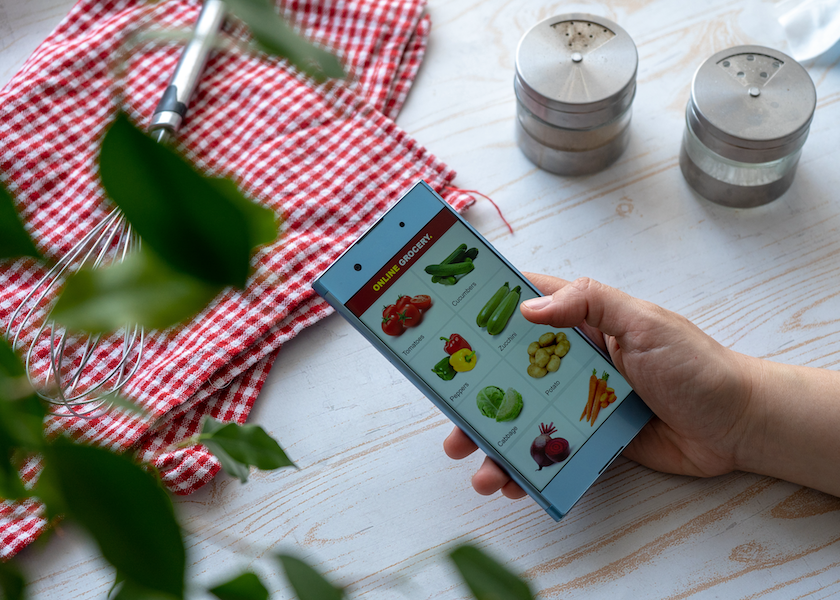Pickup sales grow in September U.S. online grocery survey

One of the three online shopping avenues is growing, while the other two are sliding back a bit, which can affect how retailers target fresh produce sales strategies.
The U.S. online grocery market generated $8 billion in sales in September, driven by $6.4 billion from the pickup/delivery segment and $1.7 billion from ship-to-home, according to a Brick Meets Click/Mercatus Grocery Shopping Survey fielded Sept. 28-29. Brick Meets Click is a retail consulting firm which specializes in the convergence of physical and digital retail. Mercatus is an e-commerce grocery platform.
While year-over-year comparisons are not available, comparisons with August 2020 show that ship-to-home’s share of sales shrank by 10 percentage points, while pickup captured all that and more, given the share that delivery also ceded during that period, according to a news release.
Consumers are opting to order online and pick it up in person.
“The combined pickup and delivery segment now captures nearly 80% of sales in the U.S. eGrocery market, and pickup hit a record-high portion of total sales in our September research wave, underscoring its critical role in a grocer’s strategy,” Brick Meets Click partner David Bishop said in the release.
In September, about one out of two U.S. households bought groceries online, a 16% increase compared to August 2020, according to the ongoing independent research initiative. For the same period, pickup/delivery’s combined monthly active user (MAU) base grew more than 33% while the ship-to-home user base decreased by more than 12%.
Since January 2021, the average number of orders placed by MAUs has consistently ranged between 2.66 and 2.83, and September 2021 continued this trend with MAUs placing an average of 2.76 orders. In contrast, pre-pandemic, the average number of online orders was significantly lower at just 2.03 in August 2019.
As far as the online order share mix, the pickup/delivery segment continues to expand, growing from 56% in August 2020 to 67% in September 2021. “Both the lift in order frequency and the shift to delivery/pickup as a receiving method illustrate how the pandemic has changed the way a sizable number of consumers shop for groceries,” Bishop said in the release.
For September 2021, the weighted average spending per order across all three receiving methods totaled $69.65, which was down 12% from August 2020 but up 19% from pre-pandemic levels in August 2019. Since August 2019, the average order values for pickup/delivery have risen by 14%, while ship-to-home has seen a 3% decline.
The likelihood that an MAU will order again from the same online grocery service in the next month landed at 61.4% for September 2021, up 1.5 points from the prior month. Compared to August 2020, however, this repeat intent rate is down more than 13 points, likely due to the high degree of concern about COVID that was compelling consumers to use these online services at that time.
When comparing repeat intent rates across retail formats in September 2021, grocery’s repeat intent rates lagged those of mass retailers such as Walmart and Target by 3.5 percentage points, or almost 6%. This gap signals that grocery retailers may have an opportunity to boost satisfaction by addressing and overcoming friction points associated with their shopping experience.
Shopper satisfaction of the quality of fresh produce in online ordering has room for improvement.
“Conventional grocers need to take a closer look at their local market dynamics to understand how well they are performing online,” Mercatus president and CEO Sylvain Perrier said in the release. “The mass merchandisers continue to set the pace and define the standard for digital grocery against which other retailers’ services are increasingly evaluated. Now more than ever, it’s essential for grocery retailers to align their operational processes with a best-in-class customer experience to retain a competitive edge.”







